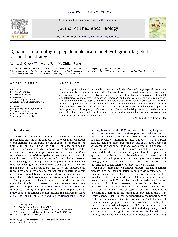摘要
A multigroup SIR epidemiological model is used to study the effects of group-targeted vaccination strategies on disease control and prevention. The model takes into consideration both proportionate and preferential mixing patterns between groups. We show that the dynamical behaviors of the model are determined by the control reproduction number R-v and, under certain conditions, by the type-reproduction number T-1v. These reproduction numbers provide criteria for evaluating control strategies including targeted vaccination programs and reduction of interactions between groups. We also illustrate how these reproduction numbers can be used to examine the influence of population heterogeneities such as group preferences, activity levels, and mixing patterns. Criteria are also established for disease eradication from the entire network of populations by applying vaccination strategies in one or some sub-populations.
